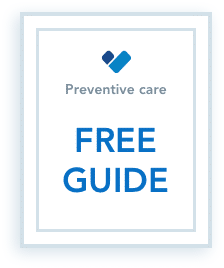What is a drug formulary?
When choosing a health insurance plan, it’s important to take into consideration the costs of the prescription drugs you and your family members will need. While the Affordable Care Act requires insurance companies to include prescription drugs in their health plans, they are not always covered at full or even half cost. That’s because each insurance company can choose which brand-name, generic drugs, and specialty drugs they cover. Also, whether or not you need prior authorization to receive certain medication and how extensive your health plan’s coverage will be.
For some people, the cost of similar drugs on different plans can be enormous. For example, if a drug costs $30 on one plan, it could be in the thousands of dollars on another. All of this information about your health plan’s medication coverage is called the drug formulary (or drug plan), and the structure of the information is broken up into tiers, based on your health insurance plan.
Let’s take a look at how this works:
What are the four drug tiers?
Most health insurance plans separate the prescription drugs on their drug formularies into four “tiers” or cost levels, based on lowest cost to highest cost. Here’s an explanation of the four tiers, starting with the least expensive:
- Tier 1: This tier usually includes only generic prescription drugs because these are always the lowest cost. The Food and Drug Administration (FDA) also requires that generic drugs perform the same as their brand-name drug counterparts.
- Tier 2: These are preferred brand-name drugs, meaning your insurance plan would prefer you are prescribed this brand of drug as opposed to any other brand name drugs.
- Tier 3: These are the brand-name drugs for the most common medical conditions that are not included on your plan’s preferred list. They are often referred to as “non-preferred brand-name” drugs.
- Tier 4: These are specialty drugs, used to treat rare or serious medical conditions, which often come at a higher cost.
What do I need to know before choosing a health insurance plan
Finding a lower price for medication can often involve doing some research. When enrolling in health insurance, you’ll want to look at the “tiered formulary” to understand what prescription drug plan is included. However, there are often costs associated with prescription medication beyond the price of the drugs themselves. Here are a few key questions to ask before you enroll:
☞ Is there a copay or cost-sharing option?
Drugs in the lower tiers of the drug formulary are often available for a flat copay amount. Whereas higher tiers of the drug list may require you to pay a percentage of the cost out-of-pocket. These out-of-pocket costs vary depending on the health plan. You can always call the health insurance company to find out how much you’re expected to pay for the prescription drugs you need.
☞ Do you need to pay your deductible in full?
Some health insurance plans require the full deductible to be paid before they begin to provide any prescription drug coverage. This payment structure may mean that you end up paying full price for most routine medications, including higher cost drugs. Some plans have a separate deductible just for prescription drugs, however, and will begin providing prescription drug coverage after you meet that out-of-pocket amount. You can check the plan’s Explanation of Benefits (EOB) to find out what costs the insurance company is responsible for.
☞ Are there quantity limits for certain prescription drugs?
Some plans will only cover a certain dosage level or amount of prescription medication each month. If your doctor prescribes more than this amount, he or she may be required to file a special request with the insurance company. In the case of some Tier 4 drugs, the plan will cover only a 30-day supply each year, requiring you to pay for the other 11 months out-of-pocket.
☞ What about mail order pharmacy (express scripts), and over-the-counter drugs?
These days, many people use mail order pharmacy services (often referred to as express scripts) to receive prescription drugs by mail. Health plans must cover this service in order for it to be offered to customers, and typically the prescription drugs offered in a drug formulary are covered. If a health insurance provider offers an express service, there is often no additional medical or out-of-pocket cost other than shipping and handling. In fact, often prescription drugs can be purchased at a lower cost by express scripts than through brick-and-mortar stores, as pharmacies add additional costs.
Over-the-counter drugs are still a medical cost, but they are usually not covered by health insurance. However, in some circumstances and with some prescriptions, certain non-formulary drugs, such as pain relievers, cold sore medications, and some contraceptives may be covered. Check your health insurance to learn more about what over-the-counter drugs may be included in your plan.
Review your plan’s drug formulary each year before re-enrolling
The list of prescription drugs included in drug formularies change each year. This is due to insurance companies striving to balance their premiums and expenses in this new health insurance environment. NPR reported that in 2015, 57 percent of silver Marketplace plans placed a certain class of expensive drugs for cancer treatment in the highest tier. In 2016, this figure had dropped to 50 percent. That means, in one year, seven percent of plans made these drugs a more affordable, lower cost option for their members. Likewise, 14 percent of silver plans put special HIV drugs in the highest tier in 2014. And only 10 percent kept them in that tier in 2016.
There are indications that public pressure and evolving regulations will continue to make the cost of prescription drugs fluctuate year over year. California recently passed a law prohibiting insurers from placing all or most drugs for a given health condition in the highest tier, and the U.S. Department of Health and Human Services has warned insurers nationwide that such classifications could be discriminatory.
If you have questions or concerns about which prescription drugs your current plan covers or want to learn more about choosing the right plan during the next Open Enrollment, our Consumer Advocates are available year-round to answer questions.














I Would Explain it to You…